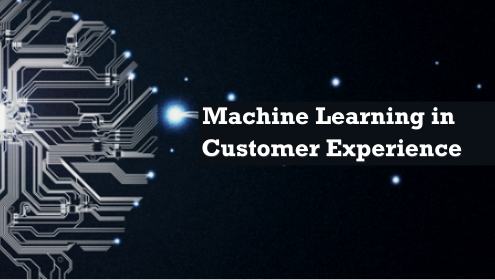As customers get more digitally empowered, they demand personalized experiences and quickly walk away from anything that seems irrelevant to them. Nowadays, personalization doesn’t mean putting a customer into a specific target group. Instead, it is about following them along the steps of their individual customer journey.
What’s complicated now is that the touch points of that journey easily switch from online to offline and vice versa. And this is where state-of-the-art technology must jump in to address fast-changing customer behavior.
The Offline Customer Experience is Here to Stay
International labor markets, information availability, and digitalization have allowed brands to compete more or less using similar resources and channels.
Brands have also been focusing on innovating their e-commerce business, which has become an oversaturated market over the last couple of years. Sure, having the items online is now a must for retailers. But physical stores aren’t going away – it’s quite the opposite.
We testify to the era of digital-first brands going offline. Let’s think of Amazon and the acquisition of Whole Foods in 2017. With this $13.7 billion deal, the e-commerce giant accessed over 450 physical locations, entering the $860 billion US grocery industry. These stores are not only new pickup and delivery points to meet customer demand, but also a valuable source of data that gives insights into customer behavior both in and out of the store.
Another example of a digital-first retail brand going offline is Glossier. Since its launch in 2014, Glossier has grown from a beauty blog to a $1 billion worth cosmetics brand. Some would say that the recipe of their success is nowadays a usual business model: leveraging social media, influencers, and personal recommendations.
But the thing is – Glossier was a pioneer of digital-native brands, and now it’s among the first to recognize offline value for the omnichannel experience. Glossier opened its first stores across the US only after the massive success of the webshop.
By addressing the touchpoints of the customer journey that only a combination of digital and physical can facilitate, the company is disrupting the skincare and beauty industry in terms of value proposition and customer experience.
Today, the online market is oversaturated, and it’s time to go back and enhance the offline experience using cutting-edge technology.
While many debate whether online will kill brick-and-mortar stores, recent studies – and strategic moves of key retailers – show that it’s actually a synergetic relationship. Real omnichannel shoppers who regularly buy from a retailer both on- and offline spend 15% more per purchase than the ones who only buy using one channel.
Macy’s has recognized that its omnichannel customers are eight times more valuable than those who shop using only one channel. As a result, they made significant organizational changes to address this fact five years ago.
Technology is changing customer behavior in and out of the store – and that train is moving fast, whether you’re on board or not. Moreover, experiential retail is becoming its own form of marketing – one where technology also plays a crucial role.
Digital capabilities allow brands to broaden the offline value proposition and take the shopping experience to the next level.
Online and Offline Customer Journey: Exploit the Potential of Every Interaction
With the number of Google searches going beyond 8.5 billion per day – with more than half of those happening on mobile – it’s natural for the customer journey to change.
There’s no doubt that mobile plays a crucial role in navigating consumers toward buying decisions. In fact, mobile capabilities have become a new “front door to the store”. We research online and then go to the store to finish the purchase – 50% of people who search on mobile visit the store the next day.
Brands must understand the importance of a seamless transition. Customers don’t care if they talk to a chatbot, a customer service agent, or an in-store sales assistant. For them, it’s one brand and one customer experience. Moreover, it’s not even about seamless journeys anymore – it’s about maximizing the possibilities of every single touchpoint. With the power of data, technology, and AI, there are endless opportunities for brands to help customers navigate to the purchase.
If we remember traditional marketing – which mostly happens offline – we probably think of mass advertising. Let’s think of a billboard on the highway, for example. Surely, it is a targeted message – it may be about the products or services drivers need. But there is so much more to dive into. For example, how old are these drivers? What car do they drive, and how often? Where are they headed?
Now think further – it’s still almost the same with stores today. You can change the outfit in your window every day. You can highlight a special deal of the day. Yes – your brand, in general, has a specific target group. But individual customers still prefer different styles of jeans. They have different body types or like different colors. So your store window can’t match everything.
Additionally, our phones have become our best in-store advisors. We research items online when we are about to make a purchase in-store – and we do it proactively. If digital channels can track customer behavior in real-time and generate perfect personalization online, why not leverage that to address every offline micro-moment as well?
Looking at that same phone, I could get notifications tailored to my preferences and most recent in-store activity that could help me make my buying decision. Shopping environments must be supported and improved by technological components, and only then will retailers be able to excite the customers and stay competitive in the market.
Technology Empowering the Offline Customer Journey
I recently accompanied a friend who was shopping for a sports item. We went into a store of a big sports goods retailer and looked for a specific item. There was a bunch of these items on the same shelf – all on sale and all marked with the same price, which was also stated on the website.
We took one and went to the cashier. It turned out the price was different than shown. We asked the store assistant if she could identify the problem, but she couldn’t help us – the billing system showed her the total price, and there was nothing she could do. So my friend decided not to buy it, but she wanted to look around the store and find something similar.
However, I asked her if we could leave. Then we searched the mall’s website to find similar stores to that one and went to buy the item in another place.
Obviously, there was an issue in their back-office process, affecting the overall customer experience. But it gets worse. The store assistant didn’t know that even though I was about to buy a small item that day, I had purchased a way more expensive piece of clothing in their store a couple of months earlier. I was a loyal customer who returned, but my trust broke that day, and the staff didn’t do anything about it.
Here are some possible scenarios – if we had a chance to leverage technology to enhance our interaction that day. If she had known what products I was browsing online before coming into the store, she could have easily suggested something different within my preferred price range. Seeing my buying history would have allowed her to ask me how I was feeling about my recent purchases or say that she knows I am a loyal customer and offer a discount the next time I shop.
At the end of the day – I could have been asked about my experience with a specific store assistant, shared my feedback, and gotten a gift card or a discount because of my poor experience. Not to mention that this retailer would benefit from first-hand feedback about the staff.
A moment of frustration could have been turned into a moment of delight, but this chance was lost. So instead, I went to another store.
Qualified staff is an essential point of the overall customer experience. Brands focus on implementing e-commerce platforms and often forget that they can also improve the in-store experience with the help of technology – and very often, it requires less effort for a much better result.
If we can perfectly target customers online based on behavioral data, think about how we could empower store assistants who are already intelligent human beings. There are so many unexplored in-store shopping possibilities, and the race for a brilliant omnichannel experience has only just begun.





